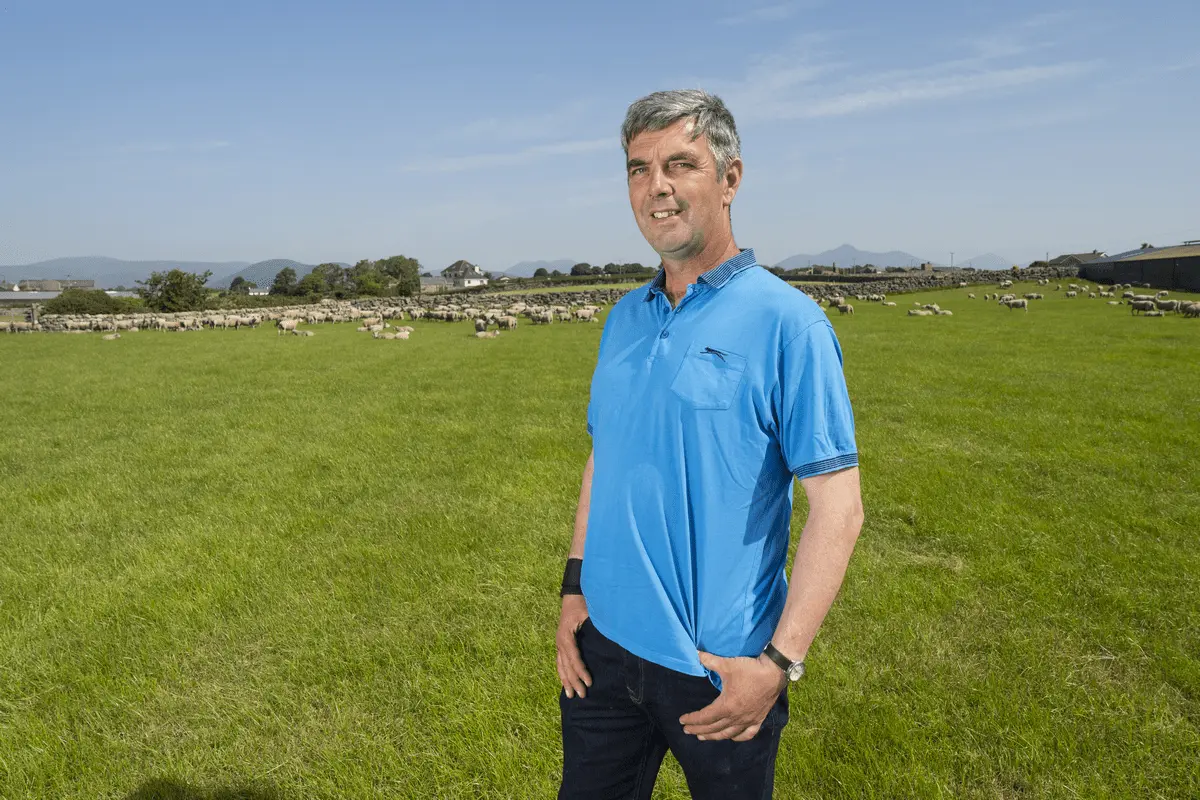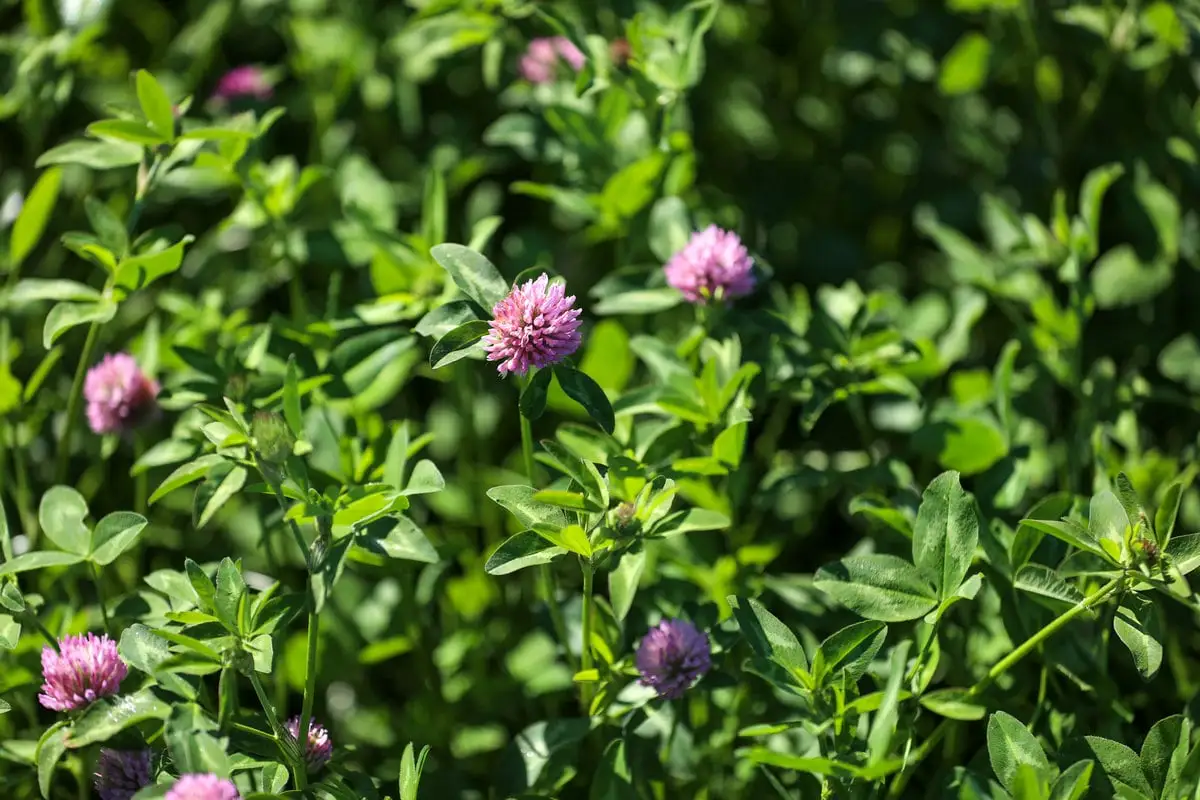With the 2023 Farmers Weekly Awards shortlist announced for the Grassland Manager of the Year, we caught up with finalist James Henderson of Seafields Farm, County Down, NI, to examine what has driven the family’s success.
Photo credit: Farmers Weekly
Farm facts: Seafields Farm, County Down, NI
- Farming 150 acres (60 hectares)
- 500 ml average rainfall for the past two years
- Farm focus: Beef and sheep
- Finishing 90 dairy-beef heifers annually
- 0.7 t/head reduced concentrates
- 0% – mortality in the last batch of 90 beef heifers
- 92% of lambs grading within specification
- 1,444 kg/ha cattle liveweight produced
- 430 kg/ha sheep carcase weight
- Buying Autumn-born British Blue calves from market aged 2-3 weeks and finishing them off grass by 24 months.
- Lambing 250 Rouge x Texel ewes and 50 ewe lamb replacements put to Primera tups.
- Closed flock – crisscrossing between Texel and Rogue to breed replacements.
- Lambs are sold through Tesco Sustainable Lamb Group while heifers are sold to ABP.
A fourth-generation family farm
Situated on a former WW2 airfield, Seafields is, fittingly, exposed to the combative elements of the Irish Sea. Measuring approximately 150 acres, the fields meet the sand and sea.
The surrounding land is highly sought-after, meaning the farm is unlikely to expand. So, the challenge for James and his family is to maximise production from the land they do have.
James is following in the footsteps of his father and grandfather on this fourth-generation family farm. Since focusing more closely on grassland management in 2015/16, James and the family have increased profitability and stock numbers without having to increase inputs.
Brenda, James’ wife, handles the administrative side of the business and provides support on-farm when needed. His son Scott has been made a partner in the business since completing an agriculture course at CAFRE Greenmount and together they would like to focus on bringing down costs while maintaining output.
Knowledge is driving success
James is very active in the wider NI agricultural industry, maintaining an on-site weather station used to generate data for Grasscheck NI, alongside information on grass production.
Seafields also serves as a technical demonstration farm for the College of Agriculture, Food and Rural Enterprise (CAFRE) and James is also involved with a business development group alongside other farmers.
James has also participated in a soil health initiative spearheaded by the Department of Agriculture, Environment and Rural Affairs (DAERA), receiving free soil analysis. He is also helping other farms improve grazing proficiency through his involvement in demonstration networks and research.
On the climate front, Seafields is part of the Beacon Farm Network, which entails measuring the farm’s carbon footprint, which James sees as essential.

Photo credit: Farmers Weekly
Grassland excellence
Seafields mainly comprises free-draining, sandy-loam soils prone to drought and nutrient loss. However, James is offsetting those losses by using free nutrients from seaweed to reinvigorate soils.
On average, leys last 10 years and any that fall below that average will be reseeded. Grass is sprayed off and composted, with seaweed and manure applied before the field is ploughed and sown with a break crop of winter barley in October. The field is then returned to grass after harvest.
The inclusion of multi-species swards and red clover and ryegrasses in leys is lowering nitrogen use. Fertiliser use has remained at 75 kg N/ha after each silage cut and 20 kg N/ha per grazing.
"Grassland management is the crux of our farm business. Having the top-performing Aber High Sugar Grasses in our bespoke mixtures is essential for both maximising grass production and stock performance,” James explains.
"We are currently using Germinal's red clover mixture and have found it to be an excellent product. It’s very much part of our plans going forward as we seek to reduce our nitrogen usage and increase our homegrown protein."

At Seafields, multi-species and red clover only receive slurry, which is obtained from a neighbouring dairy farm. Slurry is applied to silage ground using low-emissions spreading equipment. Applying granular lime beforehand and CAN fertiliser to reseeds has helped lift soil pH to 6.5, with the entire farm soil tested annually.
Surplus grass is baled rather than attempting to graze higher covers. This quality forage is fed during periods of grass shortages and in winter. Along with taking three quality cuts of silage, this has helped lower concentrate use from 1.3 t/head to 0.6 t/head.
Seafields has transitioned from set stocking to rotational grazing. By pre-mowing and fencing off half a paddock at a time, utilisation has greatly improved.
He also rotates silage ground and grazing paddocks, reporting this has helped with maintaining his wedge and optimises flexibility if faced with weather challenges.
James explained that this also keeps the dock population down and helps manage the worm burden with faecal egg counts (FECs) taken to inform worming policies.
Livestock production
Effective grassland management has helped farm profitability treble in nine years by increasing stocking rates by 40% and lowering inputs by doubling grass production from 6 t DM/ha to 12t DM/ha.
“Ten years ago, I would have described this farm as one where we kept beef and sheep. Today, I would say this is a grassland farm where beef and sheep keep us,” James says.
Calves are bought in at two weeks old in October and November and reared on milk powder in a purpose-built shed until they weigh 100 kg. The calves spend their first winter on a home-mix of barley and soya hulls and are transitioned to red clover silage ahead of turnout in March.
Stock classes match grass growth well with lambs finished as the demand from cattle intensifies. Excellent grass utilisation of 86% is achieved by pre-mowing every cattle paddock from the third rotation and every other rotation thereafter. Post-weaning, fit ewes follow lambs.
Stock get weighed at regular intervals and ewes regularly body condition scored to ensure they are at the target BCS 3. This informs future grazing and breeding decisions with sire performance compared.
Days to slaughter has consistently lowered year-on-year since 2016, due to improved grassland management and genetic selection of sheep. Lambs from birth to weaning grew at 290 g/day in 2023 while second-year heifers are averaging 1.1 kg daily.
Ask a grassland expert
Submit the contact form below to ask us any questions about grass and forage production.
